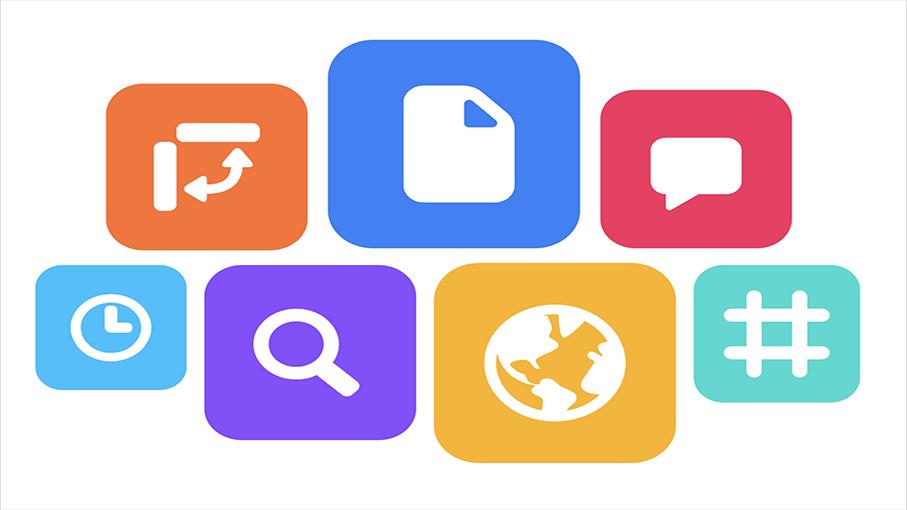Introducing Airtable Blocks
Apps that live on top of your base and offer new ways to visualize your work
Apps that live on top of your base and offer new ways to visualize your work
Note: "On September 14, 2020 we changed the name of Blocks to Apps. You can learn more about this name change here."
Here at Airtable, we've long believed that people and organizations can do powerful things when given the ability to build their own custom tools easily.
From small town fire departments to studios handling post production on major motion pictures, we've seen teams of all shapes and sizes achieve more when they're empowered to work the way they want—not the way their software demands.
Starting today, you can take your bases (and, dare we say, your work) to the next level with Airtable Blocks.
Blocks are modular apps that live on top of your Airtable bases. From map, chart, and timeline, which introduce new ways to visualize your work, to Google Cloud Vision, translate, and send SMS, which help put it into action, blocks not only enhance your existing Airtable use cases, but also introduce completely new ways of building your own app workflows.
“Airtable Blocks has been a powerful addition to an already powerful product. The entire Blocks platform has allowed us to surface mission-critical insights in real time as our business evolves—adding an extra layer of operational efficiency to our team.”
Carol Li, Worldwide Post Production Specialist at Netflix said.
An infinitely recombinable Lego kit for your business
We've always thought of Airtable as a Lego kit that enables you, the creator, to build your own workflows (with a friendly, end-user-customizable database at its core). Blocks takes this to a new level, with a completely new set of Lego parts that instantly add a level of connectivity and interactivity to the space of possibilities you can build.
Take, for instance, our Vision block. For the first time, non-programmers can leverage the immense power of Google's Cloud Vision AI technology in their own dynamic ways.
For example, UK-based digital creative agency (and early Blocks beta customer) This Here used the Vision block during the most recent New York Fashion Week to analyze and automatically tag hundreds of photos taken and posted on Instagram by the influencers with whom they work. They were able to apply these rapid insights to help their clients—major fashion brands—better understand which characteristics led to the highest engagement during this key moment in the season.
With the same Vision block, Insomniac Events NR, producer of the largest multi-day event in North America, supercharged their lost and found management process. The power of the automatic tagging functionality allows them to quickly capture key information about each lost item (color, type, brand, etc) and then surface it in real time at the event site to reconnect concert-goers with their belongings even faster.
With the Vision block, it takes only a few clicks to tag all the images in your base using Google's powerful Cloud Vision API.
Each block introduces new superpowers
Each block opens up powerful new possibilities for your workflow. For fast-growing unicorn startup Thumbtack, one block—page designer—helped to automate an extremely time-intensive manual process: creating labels for each team member's lunch that detail ingredients, allergies, and more.
“Blocks has become the answer to our labeling problems, enabling us to go straight from an entered record to a printed label without any manual effort,” said Dana Berge, culinary coordinator at Thumbtack.
“Together with Airtable’s database functionality, Blocks has solved our problem. I can’t say how much time and work we’ve saved by not having to build our own software,” Berge said.
Page designer, map, chart, and 3D space—just a few of the dozens of blocks that you can add to your bases today.
Mix and match to take your workflow to the next level
Each block on its own extends the power of the information and processes captured in any Airtable base. The real power, however, comes when you use them together.
Carnival Cruise Line uses blocks to manage onboard talent with ease. They employ the world clock block to acknowledge the different time zones in which their ships operate, the timeline block to visualize how different shipboard positions are scheduled across their fleet of 26 ships, and both the chart and summary blocks to quickly get a pulse on crucial KPIs for the program, such as the number of current openings available, the amount of onboarding new hire team members, and the percentage of filled opportunities in relation to the total opportunities available.
“With the addition of Airtable Blocks, visualizing key performance indicators has never been easier for us! Since assigning blocks to many of our KPIs, our overall transparency has improved, which has then allowed us to identify and address challenging areas with quicker response time,” said Julian Clarkson, Casting Supervisor, Musicians & Pro DJs.
